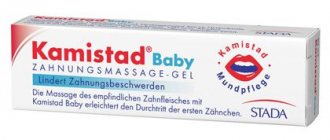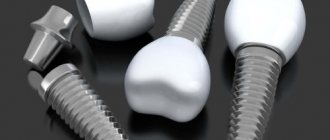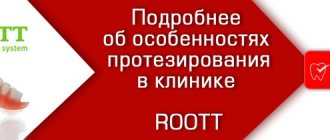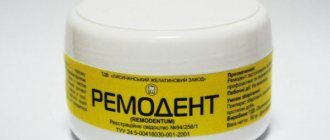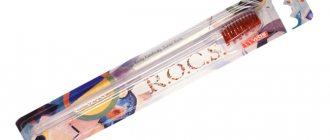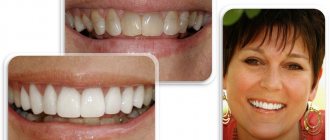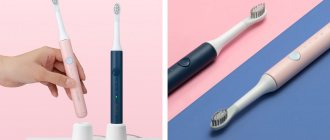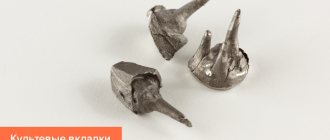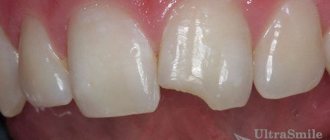pharmachologic effect
Manufacturer: LEGACY PHARMACEUTICAL GMBH (Switzerland)
Release form: ointment, gel for external use, solution for intramuscular and intravenous administration
Active ingredient: deproteinized hemoderivative of calf blood
Analogs: Metrogyl denta, Levomekol, Methyluracil
Solcoseryl is a medicine with regenerating, wound-healing, angioprotective and antihypoxic properties. The active substance of the drug is rich in low molecular weight organic compounds (amino acids, oligopeptides, nucleosides), which have a beneficial effect on damaged skin tissue.
Under the influence of Solcoseryl the following occurs:
- stimulation of tissue regeneration;
- collagen synthesis in vascular walls;
- transport of oxygen and glucose to cellular structures suffering from hypoxia.
Depending on the degree of damage and the condition of the wound surface, Solcoseryl is used in the form of a gel or ointment.
What is Solcoseryl ointment used for?
The drug is based on deproteinized dialysate obtained through special processing from the blood of calves. This substance is often used in medicine in countries such as China, Korea, and the entire CIS. It has proven itself to be an effective remedy that can:
- enrich tissue cells damaged due to hypoxia with oxygen and glucose;
- start tissue repair processes;
- activate healthy cell division processes;
- increases the level of energy produced by cells;
- protects the skin from external damage by forming a film on its surface;
- triggers the production of collagen by tissues.
Based on the activity of the drug, the drug can be used for:
- frostbite;
- psoriasis;
- anal ring cracks;
- cuts;
- abrasions;
- scratches;
- bedsores;
- acne marks;
- dermatitis;
First of all, to achieve the best effect, it is necessary to start therapy in the early stages of the problem.
Solcoseryl - instructions for use
According to the instructions for use of Solcoseryl, the product is applied to the wound surface, having previously treated it with a disinfectant solution. Purulent wounds or trophic ulcers require surgical treatment of the wound surface before treatment.
Solcoseryl gel is used on fresh wounds with moist secretions 2-3 times a day. The ointment form of the product is applied only to a dry wound surface 1-2 times a day. The combined use of external and parenteral administration of Solcoseryl is indicated for severe trophic ulcers of the skin or soft tissues.
Medicine "Actovegin": description
This drug is, in fact, not an analogue, but a synonym for Solcoseryl. The instructions for use are almost the same as for Solcoseryl. The price (analogs in the form of ointment for this drug are often cheaper) is slightly lower in pharmacies. The main active ingredient in it is the same - the blood of calves processed in a special way. Like Solcoseryl ointment, Actovegin improves blood circulation and promotes regeneration. It is available in the same forms, as well as in tablets.
There is no particular difference between these two drugs. The only thing is that Solcoseryl is more often used for external use. Doctors prescribe Actovegin mainly intravenously. Stroke is often treated with this medicine. Like Solcoseryl, this analogue is not prescribed to pregnant women and children under 18 years of age.
Analogues of Solcoseryl
The domestic and foreign pharmaceutical industry produces a large number of analogues of Solcoseryl ointment for the skin, which have similar properties. They are sold to the pharmacy chain in the form of:
- synonyms;
- generics;
- combined means.
A wide variety of Solcoseryl substitutes make it possible to select the most effective means for the treatment of wounds and ulcers of various etiologies.
Table of Solcoseryl analogues with price and country of origin.
| Analogue | Cost in rubles | Manufacturer country |
| Solcoseryl | 410–600 | Switzerland |
| Actovegin | 580–1550 | Austria |
| Metrogyl denta | 250–270 | India |
| Levomekol | 120–140 | Russia |
| Methyluracil | 65–160 | Russia |
| Bepanten | 390–700 | Germany |
| Propolis ointment | 120–150 | Russia |
| Panthenol | 130–320 | Croatia |
| Stellanin | 380–420 | Russia |
| Argosulfan | 390–600 | Poland |
| Contratubeks | 570–960 | Germany |
| Holisal | 280–510 | Poland |
| Vitadent | 110–320 | Russia |
| Dentokind | 580–600 | Germany |
The price of Solcoseryl analogues fluctuates over a wide range. A large selection of these drugs allows the patient to purchase cheap analogs of Solcoseryl, depending on the indications and the condition of the wound surface.
Analogues of Solcoseryl ointment
The pharmacological market offers expensive and cheap analogues of Solcoseryl, which are not inferior and sometimes even superior to the main drug in their therapeutic effect.
What can replace Solcoseryl ointment? The most common means are:
- Bepanten – has a regenerating, anti-inflammatory, metabolic effect. This ointment can be used as an analogue of Solcoseryl for children, relieving diaper rash and diaper dermatitis in infants.
- Propolis ointment - restores the affected areas of the skin due to the natural composition of the ointment, which includes minerals, trace elements, amino acids.
- Panthenol – has regenerative and anti-inflammatory properties, stimulating healing and restoration of skin structure in case of injuries, burns of various origins, and some diseases (dermatitis, trophic ulcers).
- Stellanin - has a stimulating effect on tissue regeneration and protects the wound surface from infection, suppressing the progression of the process due to the active iodine included in the product.
- Argosulfan - has an antimicrobial effect, effectively protecting wounds of various etiologies from infection and promoting their speedy healing.
A wide variety of analogues of Solcoseryl ointment allows you to combine products, achieving the best therapeutic effect and reducing the recovery time for damaged skin.
Cost of drugs
Today there are both expensive and cheap analogues of Solcoseryl on sale.
The table below shows approximate prices for some of the substitutes for this medicine described above. The cost of Solcoseryl analogues
| A drug | Price |
| "Solcoseryl" | 254 rub. per tube |
| "Actovegin" | 100-150 rub. per tube |
| "Methyluracil" | 40 rub. per tube |
| "Taufon" | 100 rub. for eye drops |
Analogues of Solcoseryl gel
In medical practice, a dosage form of the drug in the form of a gel, which is lighter in texture, is widely used. There are cheap analogues of Solcoseryl gel and more expensive ones, which include:
- Contratubeks – has fibrinolytic, anti-inflammatory, keratolytic effects. Due to the active components, the proliferation of connective tissue, swelling, and pain are blocked. Keloid scars and skin changes after acne or furunculosis are softened.
Early use of Contratubex eliminates the formation of scar tissue, and keloid scars become less noticeable.
Analogs of Solcoseryl eye gel
In ophthalmic practice, cheaper analogues of Solcoseryl in the form of an eye gel, represented by the following preparations, are widely used:
- Korneregel – has regenerative and anti-inflammatory properties. A special feature of this dosage form for the eyes is its viscosity, due to which Korneregel does not penetrate the eyeball, but remains on the damaged area and is not washed off with water.
- Dexpanthenol – has a regenerating, anti-inflammatory and metabolic effect. The analogue has the ability to replenish pantothenic acid deficiency in the area of damaged skin or mucous membrane.
- Hyphenosis - has a protective effect on the corneal area, moisturizing and protecting it in the presence of reduced secretion of tear fluid. The analogue has a high degree of viscosity, which leads to the restoration and stabilization of the optical properties of the tear film.
- Taufon - has a stimulating effect on reparative and regenerative processes in diseases of a dystrophic nature or accompanied by metabolic disorders in the eye tissues.
A large selection of Solcoseryl eye gel analogues allows you to successfully treat various ophthalmological diseases and injuries.
Analogues and substitutes of the drug
There are no complete analogues of the product. But you can choose a medicine that performs some identical functions. Not all of them are cheap, since regenerating drugs contain expensive components. Data on analogues are presented in the table.
| A drug | Active substance | Manufacturer | price, rub. |
| Actovegin | Actovegina concentrate | Takeda Pharmaceuticals | 1100-1600 |
| Korneregel | Dexpanthenol | Valenta | 400-600 |
| D-panthenol | D-panthenol | EGIS Pharmaceuticals | 150-500 |
| Adgelon | Whey glycoprotein adgelone | Endopharm | 700-1100 |
| Levomekol | Chloramphenicol, Methyluracil | Nizhpharm | 100-160 |
Each remedy has distinctive indications, contraindications, and side effects. Pharmacodynamics are only partially similar to Solcoseryl. Therefore, they undergo a preliminary examination to make sure that they need to use the product, since not every one of them has a low cost. It is especially important not to use antibacterial ointments unless necessary.
Actovegin for regeneration
Actovegin is a medicine based on a concentrate of the same name. This is an expensive drug, produced in ampoules and tablets. The main active ingredient provides the following effects:
- acceleration of metabolism throughout the body, which leads to an increased regenerative effect not only in the lesion, but also in all internal organs;
- protection of the brain and peripheral nerve fibers from the negative effects of internal and environmental factors;
- restoration of normal blood flow in the capillaries, the appearance of new vessels.
Despite conducting sufficient clinical trials, precise data on pharmacokinetics could not be studied. This is due to the fact that the medicine consists of components that are also produced in the body. They go through the same path of transformation and excretion as the active substances. This reduces the risk of negative effects that may occur at any time during therapy.
Differences and similarities with Solcoseryl
Actovegin is used for disorders of blood circulation and central nervous system activity. They undergo a preliminary examination. Indications for use are as follows:
- impaired cognitive function, deterioration of communication between neurons, which leads to dementia;
- deterioration of blood circulation in the periphery, leading to hypoxia, tissue necrosis;
- diabetic complications associated with deterioration of blood supply to organs, polyneuropathy.
Side effects are extremely rare. Of these, a local, systemic allergic reaction is isolated. Urticaria and shock may develop. Very rarely, muscle inflammation occurs. Due to the reduced negative effects, the drug is prescribed even for pregnant women. However, it has several contraindications:
- increased sensitivity;
- heart failure in the stage of decompensation;
- pulmonary edema, fluid retention in any part of the body, urinary disturbances;
- minor age.
Solcoseryl acts only at the site of application. It improves regeneration only in the affected area. If you use Actovegin, the metabolism of the whole body and peripheral blood circulation are restored. It has not only a restorative, but also a protective effect.
What is better Solcoseryl or Korneregel?
Korneregel is an ophthalmic agent based on dexpanthenol. It has an average cost and helps in healing the outer parts of the eye. Due to the active component, the following pharmacological action is formed:
- strengthening metabolic processes in the lesion, healing of damaged tissues;
- increased proliferation of fibroblasts, which further enhances the regeneration process;
- saturation of the skin and mucous membranes with pantothenic acid, which they need normally.
Ophthalmologists note that the gel form provides a longer lasting effect. It binds to the affected area and is not washed away for a long time. When the drug is applied to the skin or mucous membranes, it begins to be absorbed.
To enhance the effect, carbomer is added, due to which there is no absorption into the inner part of the eyeball or systemic blood flow.
The drug is indicated for use in the treatment of non-inflammatory keratopathy. It is effective for damage to the cornea and conjunctiva associated with mechanical trauma, burns, and infection. Rarely, side effects such as an allergic reaction occur.
The drug is similar to Solcoseryl, the difference is small. Both medications are applied topically. But Korneregel can be used for the eyes, then the cornea will be restored. Solcoseryl has a thicker form, so it lingers longer on the lesion.
What is better D-Panthenol or Solcoseryl?
D-panthenol is a medicine based on dexpanthenol. Available in the form of a cream for external use. Due to it, a qualitative effect is formed, since the medicine is not eliminated from the epidermis for a long time, forming pharmacological actions:
- increased metabolism at the site of application;
- stimulation of skin regeneration, acceleration of mitosis;
- strengthening the strength of collagen fibers;
- slight anti-inflammatory effect.
Pharmacokinetics were studied during clinical trials. The medicine is absorbed from the site of application and absorbed into the systemic circulation. There it turns into pantothenic acid, binding to blood plasma proteins. Cream and ointment are used for the following conditions and diseases:
- mechanical damage to the skin;
- sunburn;
- treatment and prevention of dermatitis of various natures;
- the influence of adverse environmental factors on the skin;
- bedsores, trophic ulcers, boils on the legs and other parts of the body;
- prolonged lack of skin healing after a transplant or surgery;
- crack, dry skin, diaper rash;
- skin care for newborns and babies.
The medicine is well tolerated. Minor allergic reactions may occur. It is contraindicated in case of individual intolerance. The action is similar to Solcoseryl, but has more extensive indications for use.
Adgelon as an analogue
Adgelon is a drug based on the serum glycoprotein adgelon. Available in the form of a solution, intended for administration inside the joints. Pharmacological actions:
- stimulation of cartilage renewal;
- reduction or elimination of joint tissue degeneration;
- anti-inflammatory effect;
- restoration of the articular surface and its mobility;
- increased production of intra-articular fluid.
The medicine is used for arthritis and arthrosis. There are no data on its pharmacokinetics. Side effects are rare. These are allergic reactions, pain, swelling. But doctors believe that this is caused by a painful injection. The medicine is contraindicated for infections, synovitis, minors, hypersensitivity to components.
Adgelon and Solcoseryl are similar only in their regenerating effect. The rest of their data is different. The first drug is administered by injection, the second is used externally. Adgelon is intended only for the articular surface, restoring cartilage tissue.
Are there any similarities with Levomekol?
Levomekol is an ointment for external use based on chloramphenicol and methyluracil. A combined product containing 2 active ingredients. Therefore, a complex pharmacological effect is formed:
- antimicrobial effect against gram-positive and gram-negative pathogenic microorganisms;
- elimination of the inflammatory effect;
- stimulation of the regeneration process when penetrating deep into tissues;
- maintaining the antibacterial effect even in the presence of pus and other secretions.
The medicine is indicated for wounds accompanied by suppuration and delayed recovery. It is applied only topically to the surface of the skin. An adverse reaction in the form of an allergy may occur, but only locally.
The medicine can be used during pregnancy and lactation, but with caution, with the approval of a doctor.
The drug is contraindicated for children under 1 year of age with hypersensitivity to the components. Negative reactions occur extremely rarely. Therefore, pediatricians can prescribe medicine even to younger children. Levomekol and Solcoseryl are similar in their regenerating effects. If the patient has a bacterial infection, only the first remedy is applicable.
Analogues of Solcoseryl injections (ampoules)
The dosage form of Solcoseryl for injection also has a number of analogues with equivalent therapeutic effect. What can replace Solcoseryl injections with, what analogues? The following medications can be included in this list:
- Actovegin - has an active effect on metabolic processes in the body. This substitute for Solcoseryl in ampoules stimulates oxidative metabolism, which leads to an increase in the energy potential of cellular structures and accelerated wound healing.
- Glekomen - has a restorative effect on the corneal epithelium and protects it from the negative influence of external irritants. The analogue stimulates proliferation, that is, the growth of the corneal endothelium and the normalization of water-salt metabolism of its stroma in case of damage and keratopathy.
The use of Solcoseryl analogues in injections for the treatment of diseases and wounds of various locations gives good results and high therapeutic efficacy.
The drug "Apropol": description
This medication is made on the basis of propolis. This analogue of Solcoseryl can be supplied to pharmacies in the form of tinctures, emulsions, ointments, aerosols and inhalations. The only contraindication to its use, unlike many other substitutes, is hypersensitivity. It has antimicrobial, anti-inflammatory, regenerating and analgesic effects on the skin, mucous membranes and tissues.
You can replace Solcoseryl with this analogue, for example, for the treatment of wounds. It is also used for trophic ulcers, scratches and stomatitis. For Apropol ointment, instructions for use are approximately the same as for Solcoseryl. Analogs in this form are, of course, most convenient for treating wounds.
Analogs of Solcoseryl dental abrasive paste
Analogs of Solcoseryl are widely used in dentistry for the treatment of gums and diseases of the oral mucosa.
- Cholisal, an analogue of Solcoseryl gel for gums, has antimicrobial, antifungal, and strong antiseptic effects. The analgesic effect, due to the special structure of the gel and its rapid absorption (2-3 minutes) into the mucous membrane of the mouth and gums, lasts for a long time (from 2 to 8 hours).
- Vitadent – has anti-inflammatory, tanning, antiseptic and hemostatic effects. The plant analogue is effective for inflammation of the mucous membrane of various etiologies of the oral cavity and periodontium.
- Dentokind - has the ability to eliminate swelling, hyperemia and pain. This analogue of dental adhesive paste is used in infants during teething.
- Asepta - has anti-inflammatory and antimicrobial effects, used for gingivitis, stomatitis, periodontitis.
The use of these Solcoseryl dent analogues for the treatment of dental diseases is highly effective in adult patients and children.
What else can replace Solcoseryl and which medication will be better in comparison? You can supplement the list of analogues with the following medications:
- Baneocin;
- Aphytofix;
- Adgelon;
- Glycomene;
- Dicloran denta;
- Vitadent.
A wide range of Solcoseryl analogues for local and external use makes it possible to combine drugs and select them taking into account the type and activity of the pathological process.
Indications for use of dental gels
The dentist may prescribe the gel to a child or adult when there are signs of gum inflammation. The reason for using the gel will also be stomatitis, which affects not only the gums, but also the entire oral mucosa.
Dental gel will help with the following symptoms and diseases:
- pain, burning, redness along the edge of the tooth crown;
- bleeding gums after chewing hard foods and brushing teeth;
- thrush, fungal stomatitis or oral candidiasis;
- glossitis (inflammation of the tongue) and papillitis (inflammation of the dental papilla);
- teething in a child;
- growth of wisdom teeth, which is accompanied by gum damage.
The medicine can only be used topically. The gel is applied to the affected areas of the mucous membrane up to 4 times a day, according to the instructions. After treating the gums, it is recommended not to eat anything for several hours, and not to drink for at least half an hour, so as not to wash off the drug. Before applying, be sure to rinse your mouth with an antiseptic or regular mouthwash.
Some types of gels are homeopathic remedies, therefore, in case of severe inflammation and pain they will be ineffective (Malavit), others have a strong anti-inflammatory and analgesic effect. There is a large selection of dental gels; it is important to understand how they differ, and which one is better for a particular problem.
Solcoseryl or Actovegin - which is better, what is the difference
Manufacturer: TAKEDA GMBH (Austria)
Release form: injection solution, tablets, cream, gel, ointment for external use
Active ingredient: deproteinized hemoderivative from calf blood
Both drugs have an equivalent mechanism of action and therapeutic effect, since they have the same active substance. Solcoseryl and its analogue Actovegin stimulate metabolic processes, tissue regeneration, and improve trophism. Despite their similarity, there is a difference between them that can be traced:
- in cost - Solcoseryl is cheaper;
- in release form - Actovegin is produced in tablets, but Solcoseryl is not.
Medicines work well and are used for healing wound surfaces and ulcerative processes of various etiologies. Atovegin will be the best, since it has a gentler effect on the body and is allowed to be used by pregnant women.
Solcoseryl or Metrogyl denta - which is better?
Manufacturer: UNIQUE PHARMACEUTICAL LABORATORIES (India)
Release form: dental gel
Active ingredient: metronidazole, chlorhexidine
Metrogyl denta and Solcoseryl have different active substances and mechanisms of action, but the same therapeutic effect. Solcoseryl will be the best, since it has more dosage forms, which makes it possible to treat dry wound surfaces with secretions.
Metrogyl denta has a smaller range of indications and is used for the treatment of affected oral mucosa.
Solcoseryl or Levomekol – which is better?
Manufacturer: JSC NIZHFARM (Russia)
Release form: ointment for external use
Active ingredient: dioxomethyltetrahydropyrimidine, chloramphenicol
Both drugs are widely used in practical medicine, especially in surgery for the treatment of complicated and uncomplicated wounds of various origins. Levomekol ointment will be the best for purulent wounds in the inflammation phase (boils, bedsores, purulent pimples).
Under the influence of the analogue, liquid secretion is eliminated from the wound surface and tissue is rapidly regenerated. For scratches and 1st-2nd degree burns, it is better to use Solcoseryl.
Solcoseryl or Methyluracil – which is better?
Manufacturer: JSC BIOCHIMIC (Russia)
Release form: tablets, ointment, suppositories
Active ingredient: dioxomethyltetrahydropyrimidine
Both medications have regenerating properties, but differ in their mechanism of action. When comparing them, Solcoseryl will be better than Methyluracil, since it has a minimum of side effects and contraindications, exceeding the number of dosage forms.
A large number of Solcoseryl analogues is an additional opportunity to select appropriate medications for the treatment of wounds and ulcers. Fast and effective regeneration of the damaged area of the skin can prevent the development of inflammation, accelerating the process of restoring the integrity of the skin.
The best analogue: the medicine "Methyluracil"
This analogue of Solcoseryl is supplied to pharmacies and clinics in the form of ointments, suppositories or tablets. Its main active substance is methyluracil. This drug is prescribed mainly for the treatment of wounds and burns. It has a regenerating, anabolic and anti-catabolic effect. This medicine also helps normalize nucleic acid metabolism. Methyluracil can be used for radiation sickness, ulcers, hepatitis, fractures, burns and for the treatment of poorly healing wounds.
It is this analogue of “Solcoseryl” that can be considered the best today. This medicine is actually effective. In addition, the price for Metiuracil in pharmacies is much lower than for Solcoseryl. Analogues often deserve excellent reviews precisely for this reason.
Questions
Solcoseryl ointment or gel – which is better, what’s the difference?
The texture of the gel is lighter than ointment and does not contain fatty inclusions. It will be the best, as it is able to penetrate deeper into the tissue and have a faster healing effect.
Solcoseryl - hormonal ointment or not?
No, Solcoseryl ointment is not hormonal.
Solcoseryl gel or ointment – which is better for the face?
In cosmetology, both Solcoseryl gel and ointment are used for the face.
What is better for wrinkles: Solcoseryl gel or ointment?
Solcoseryl Ointment is used for wrinkles.
Solcoseryl - hormonal or not?
No, Solcoseryl gel is not hormonal.

